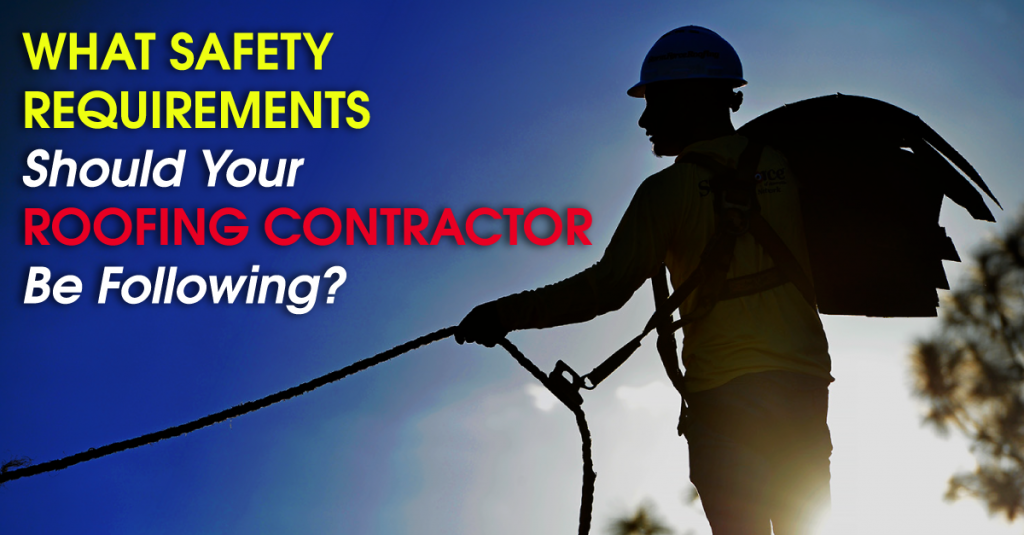When your home becomes a roofing contractor’s worksite, the safety of the roofing crew and the people on the ground below them should be a top priority. Roofing is one of the most dangerous jobs, and no matter how skilled or experienced the roofers are, they must never become complacent about staying safe. Failing to follow the safety requirements can lead to serious injury and possibly, death.
It’s vital to hire a roofing contractor committed to the safety of their employees and your home. With that said, what safety requirements are needed for roofing and what type of equipment should a roofer use?
OSHA summarizes its roofing safety requirements as “Plan, Provide, and Train.”
PLAN Ahead to Get the Job Done Safely
Safety should be a part of every roofing project. Roofing contractors need to learn as much as possible about the job site before work can begin. This involves identifying any potential safety issues around the home and up on the existing roof. The contractor must assess whether or not the roof will be able to structurally support the workers.
They should also follow the appropriate standards for the roof’s pitch (steep or low slope). The project-specific safety plan should include the roofing crews and those on the ground.
PROVIDE the Right Equipment
A roofing contractor must provide fall protection and the right tools for the job. A workplace six feet or higher puts roofing crews at risk of serious injury or death if they fall. As such, roofing contractors must select the appropriate fall protection equipment to ensure workers’ safety.
Personal Fall Arrest System (PFAS)
A PFAS is designed to arrest a fall and prevent the worker from hitting the lower level. It consists of a harness, anchor, deceleration device, and a lifeline/lanyard. Each component must be properly attached to be effective.
Guardrail Systems
These are used to protect roofers from fall hazards around roof openings and roof perimeters. The guard rail system must be installed 35 to 49 inches above the working or walking surface. It must withstand a 200-pound force within 2 inches of the top edge in any outward or downward direction.
Safety-Net Systems
These are webbed or mesh systems suspended below a skylight and other openings on the roof to catch a falling worker. They should be at least 30 feet above walking or working surface and capable of supporting at least twice the weight of the worker. The roofing contractor should check the quality of the safety net and the weight it can withstand.
Ladders
Stepladders and extension ladders are essential tools for roofing jobs, but your roofer must use them in the safest and smartest way possible. Ladders should be placed at level/rigid surfaces and set at a safe angle to prevent slipping or shifting. Also, ladders should not be used in high-traffic areas.
Personal Protective Equipment (PPE)
The most typical PPE used by roofers include hard hats, work boots, safety glasses, high-visibility vests, work gloves, hearing protection, toe protection, proper clothing, etc.
TRAIN Workers to Use the Equipment
Of course, safety is much more than providing the right equipment. A good roofing contractor should also provide regular safety training to the workers. Fall protection is an OSHA-required training for roofers.
Crew members should learn how to safely operate the equipment they’ll be using on the job, inspect and maintain a job site, and recognize potential hazards. Workers should have refreshers often and retraining as appropriate.
StormForce prioritizes the safety of its workers and clients in Jacksonville, FL. From the initial project planning to the cleanup, we keep safety in mind on every job. Contact us today to learn more about our commitment to roofing safety.
